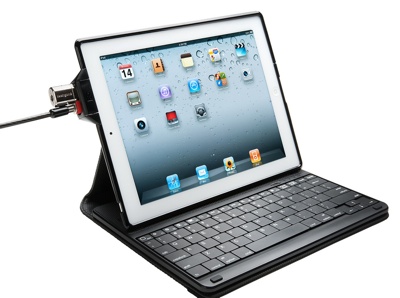Apple Delivers Public QuickTime 3.0
Developer Preview Release
CUPERTINO, California–Dec. 1, 1997–Apple Computer, Inc. today announced
it has reached a major milestone in the development of QuickTime 3.0 with
the public availability of the QuickTime 3.0 Developer Preview Release.
QuickTime 3.0 is the latest version of the Company’s award-winning,
industry-standard software architecture for creating and publishing digital
media for Mac OS and Windows. The QuickTime 3.0 Developer Preview Release
is available for immediate download from the web at:
http://www.quicktime.apple.com/preview/.
Apple has already aggressively seeded an early QuickTime 3.0 prototype to
key developers including companies creating powerful digital media. These
QuickTime developers include Adobe, Avid Technology, Broderbund, Cinebase,
Equilibrium, Go Live, Macromedia, Media 100, Puffin Designs, Radius, Terran
Interactive and TrueVision. Having gained positive feedback from seeded
developers, Apple is now making the QuickTime 3.0 Developer Preview Release
available to the public.
“In addition to those seeded with QuickTime 3.0, the public availability of
the preview release allows more than 6,000 current QuickTime
developers–more than 3,000 Windows–to begin incorporating the latest
multi-platform technology into their digital media products,” said Mitchell
Weinstock, senior product manager, QuickTime, Apple Computer, Inc. “The
products and tools developers are currently building that leverage
QuickTime 3.0 enable content creators to deliver compelling digital media.”
Developers Support QuickTime 3.0
More than 600 QuickTime developers plan to incorporate QuickTime 3.0 into
their digital media products.
“Broderbund Software uses QuickTime in nearly all of its products,
including the recently released hit Riven: The Sequel to Myst.” said Mike
Foulger, Chief Technical Officer for Broderbund Software, Inc. “We have
developed technologies that rely heavily upon QuickTime for their
functionality and performance. In the past, this has required separate
engineering efforts for Macintosh and Windows deliverables. With QuickTime
3.0’s multi-platform capabilities, we are now merging these efforts. As new
technologies that profess to compete with QuickTime emerge, we look
carefully at them, but we remain committed to the use of QuickTime in our
products. We have used many advanced features of QuickTime 3.0 in the
upcoming release of The Journeyman Project 3: Legacy of Time. QuickTime 3.0
remains the only real multi-platform digital video solution and the new
features make it an even more compelling solution.”
“With QuickTime 3.0, we now can build a powerful standard architecture for
digital media that allows us to create rich, cross-platform DV products
like PhotoDV, MotoDV, and now EditDV,” said Joe Klingler, vice president of
video engineering, Radius, Inc. “Since ’91 when QuickTime first caught the
imagination of a new generation of media professionals, Radius has steadily
worked to develop products to harness the power of this breakthrough
technology. Our commitment to both DV and QuickTime has given Radius an
early lead in the digital video market as well as the ability to develop
tools that empower the creative professional.”
QuickTime 3.0 Features and Enhancements
In addition to QuickTime’s leading audio and video technology, QuickTime
3.0 is unique in that it offers a single integrated digital media solution
that now includes both interactive virtual reality and 3D animation
capabilities. QuickTime 3.0 is significant as it brings the full power of
QuickTime–including the ability to capture, edit, compress, and playback
digital media–for the first time to all major personal computer platforms,
including Mac OS 8 and Mac OS 7.x, Windows 95 and Windows NT 4.
QuickTime 3.0 supports the playback, editing and integration of major video
file formats, providing one of the highest levels of video interoperability
in the market. These video formats include QuickTime Movie, comprising over
50 percent of video content found on the Internet according to New Media
Magazine; AVI, a common Windows video format; and DV, an emerging digital
video standard for consumer video cameras. QuickTime 3.0 also supports
industry standard still image file formats, such as Photoshop, for content
creators; TIFF, for digital print publishing; JPEG, image compression for
still pictures on the Internet; and PNG, an emerging Internet standard.
QuickTime 3.0 also supports many digital audio, animation, and MIDI
formats. In addition, QuickTime 3.0 has a real-time special effects
architecture enabling digital content creators instant access to more than
150 transitions, filters and special effects.
QuickTime: The Foundation for Leading Video Software Tools First released
in 1991, QuickTime is the recognized leader in software technology for the
creation and delivery of multimedia content. QuickTime is used for
professional video editing, website creation, and the development of
CD-ROMs. QuickTime 3.0 has already won several industry awards including
Videography’s National Association of Broadcasters (NAB) ’97 Editors’
Choice Award, Television Broadcast Magazine’s NAB Editors’ Pick of Show
Award and New Media’s Hyper Award for System Software.
Availability/Licensing
QuickTime 3.0 is expected to be available January 1998. Developers may
license the current version of QuickTime for redistribution with
applications, titles, and media clip libraries that support QuickTime. For
additional licensing information, contact Apple Software Licensing by phone
at: (512) 919-2645 or by email at: sw.license@apple.com.
Apple Computer, Inc. ignited the personal computer revolution in the 1970s
with the Apple II, and reinvented the personal computer in the 1980s with
the Macintosh. Apple is now recommitted to its original mission – to bring
the best personal computing products and support to students, educators,
designers, scientists, engineers, businesspersons and consumers in over 140
countries around the world.
Sheri Dupart
Apple Computer, Inc.
(408) 974-9492
email: dupart@apple.com
Russell Brady
Apple Computer, Inc.
(408) 974-6877
email: brady2@apple.com


